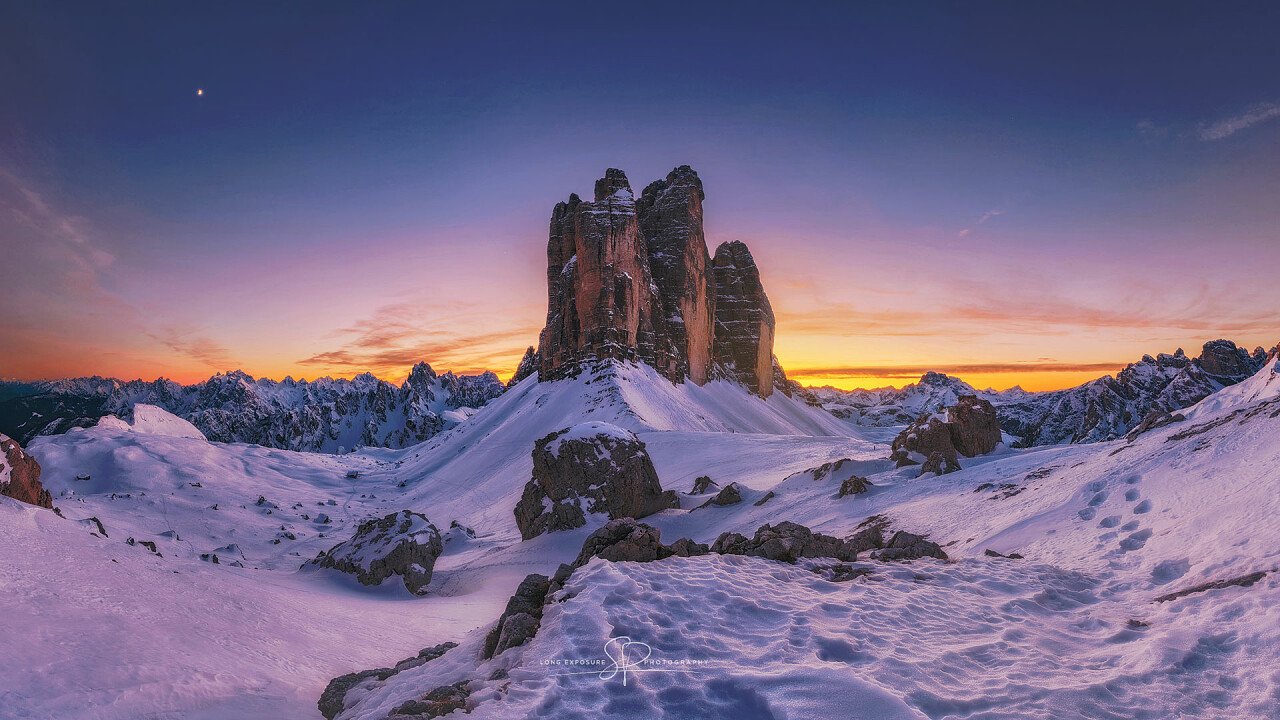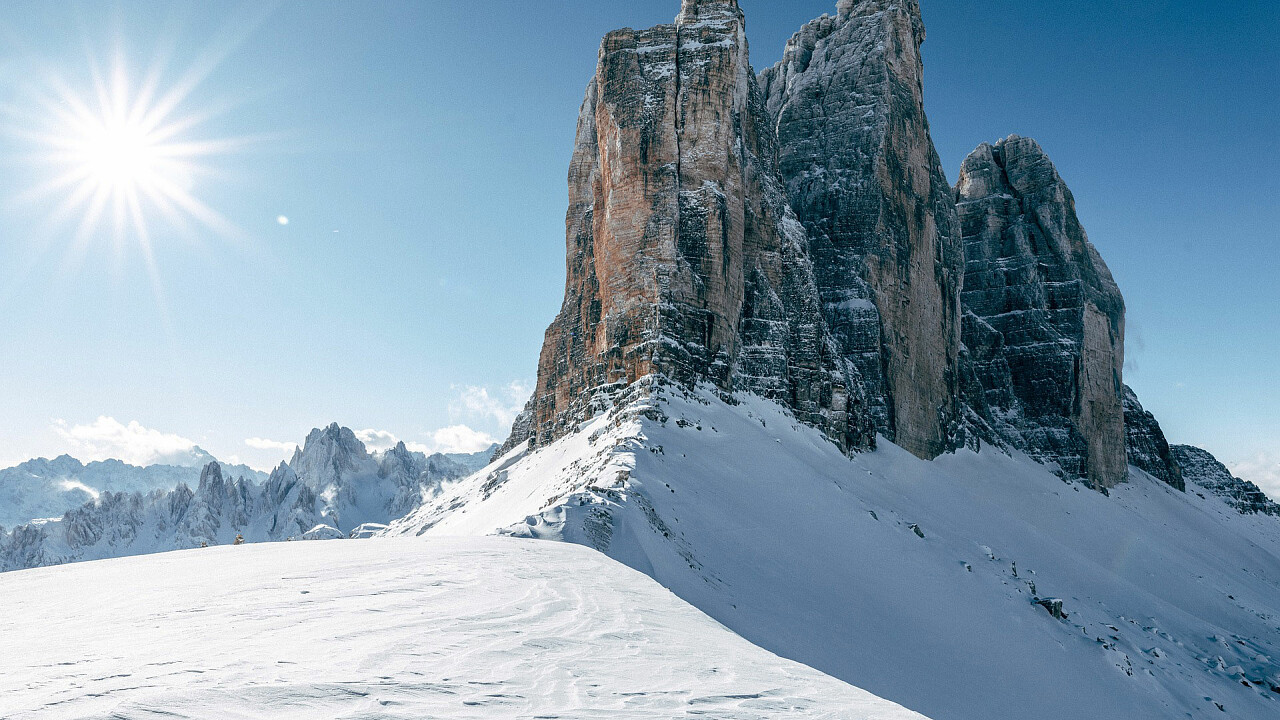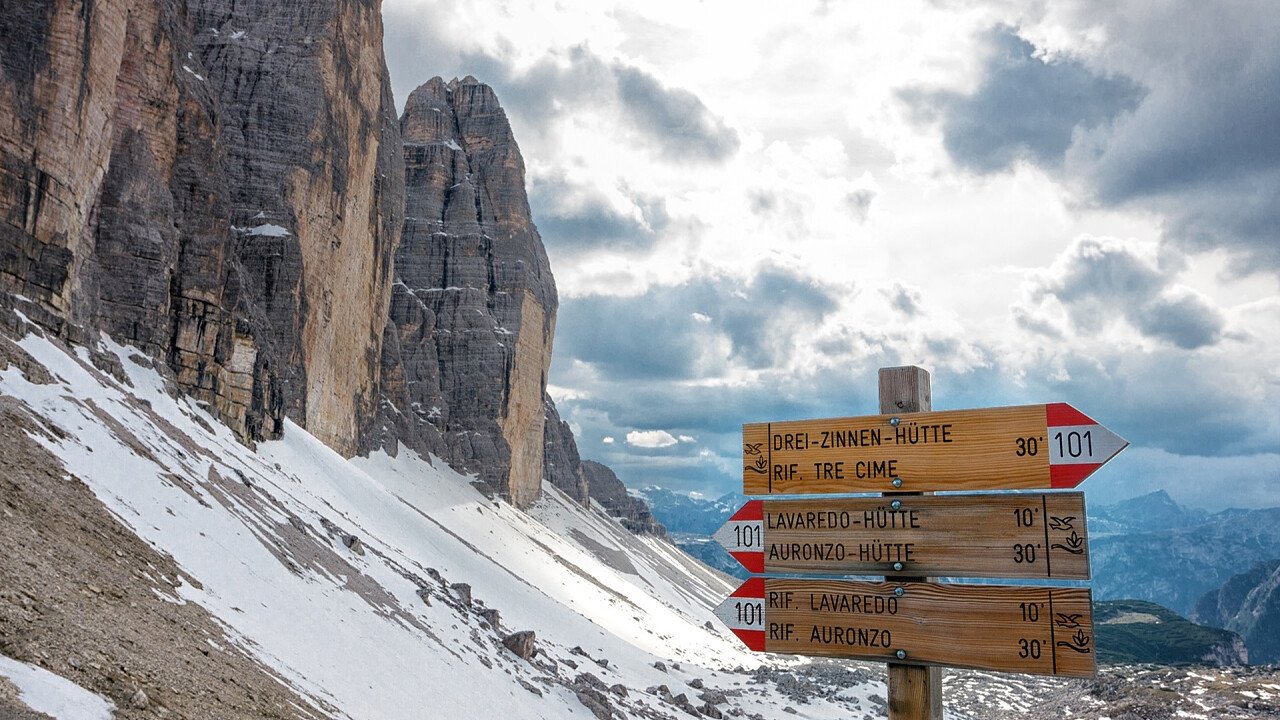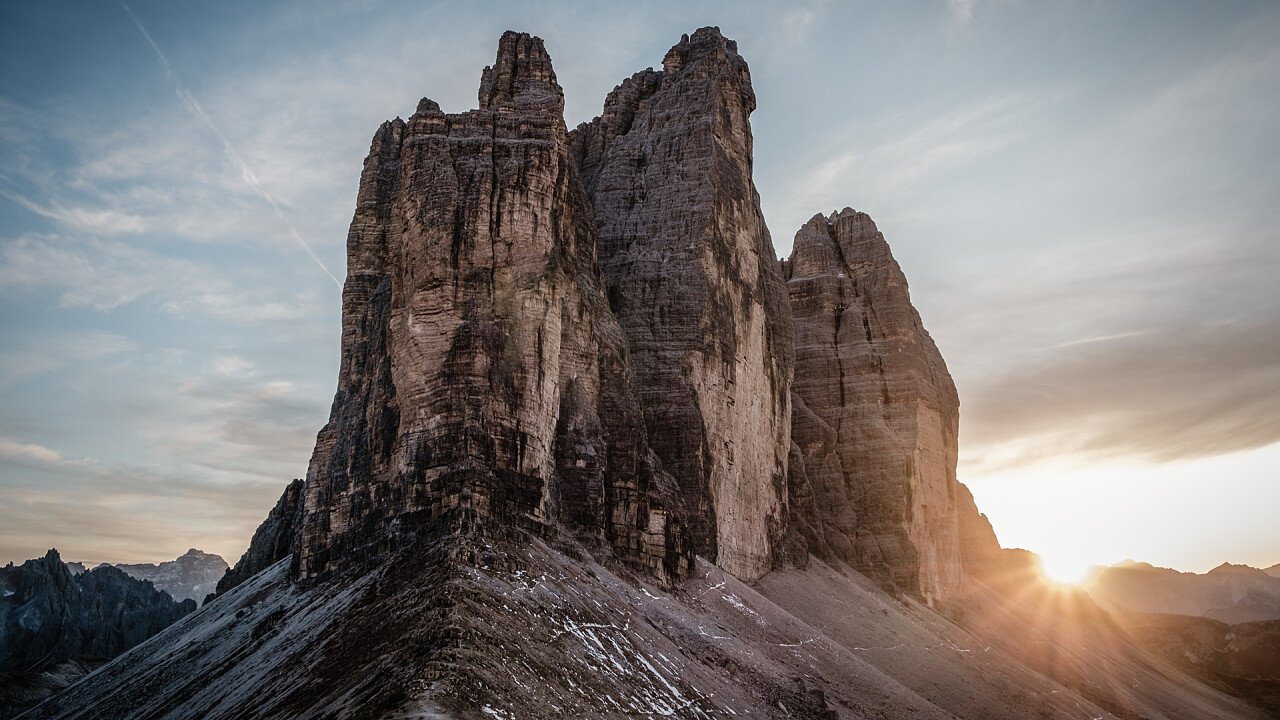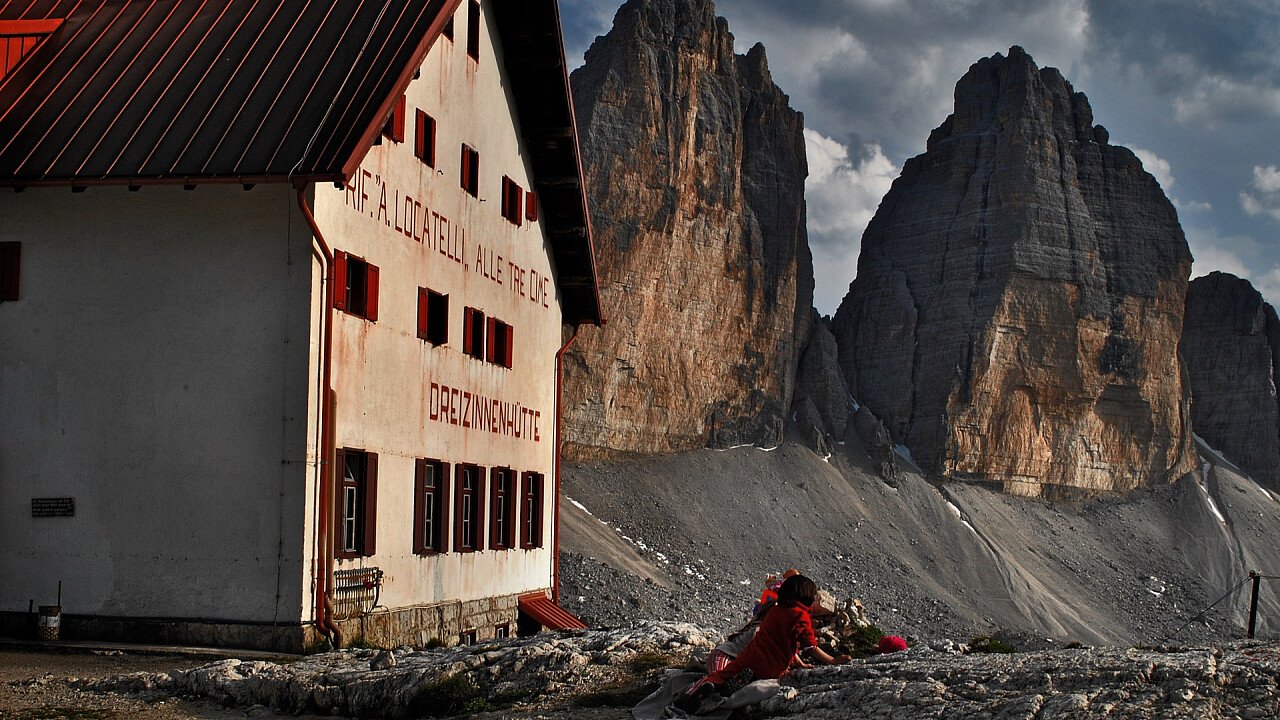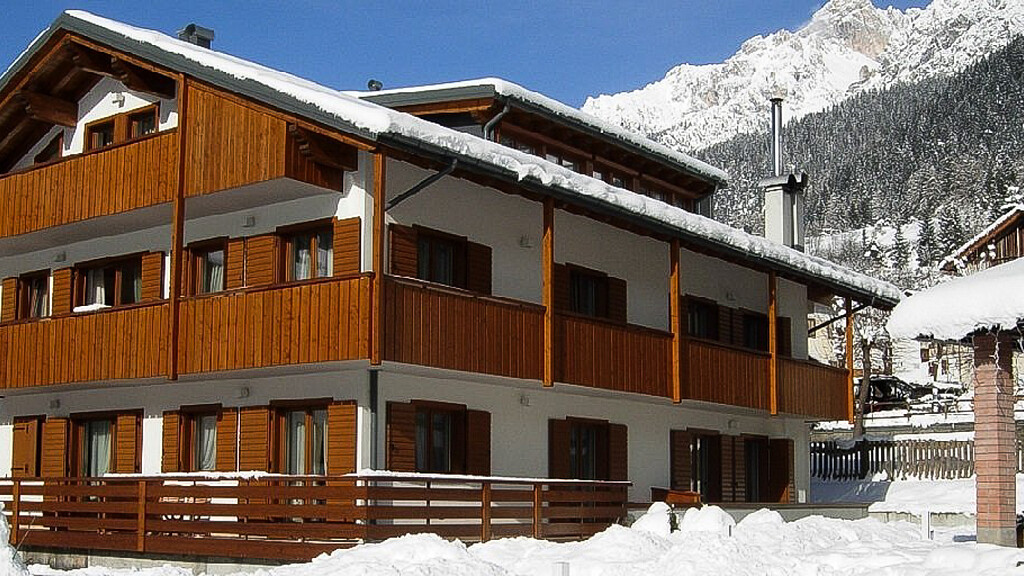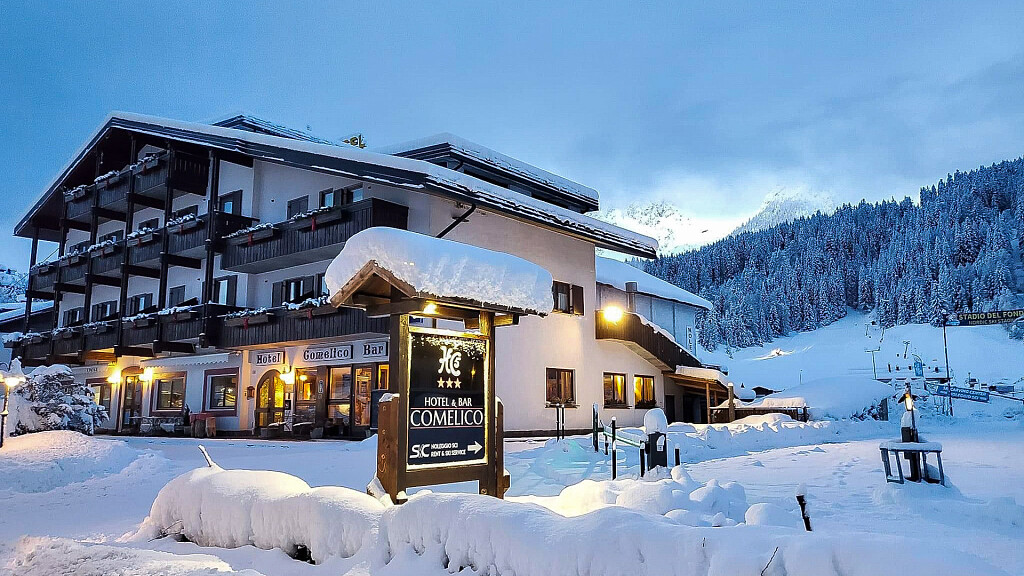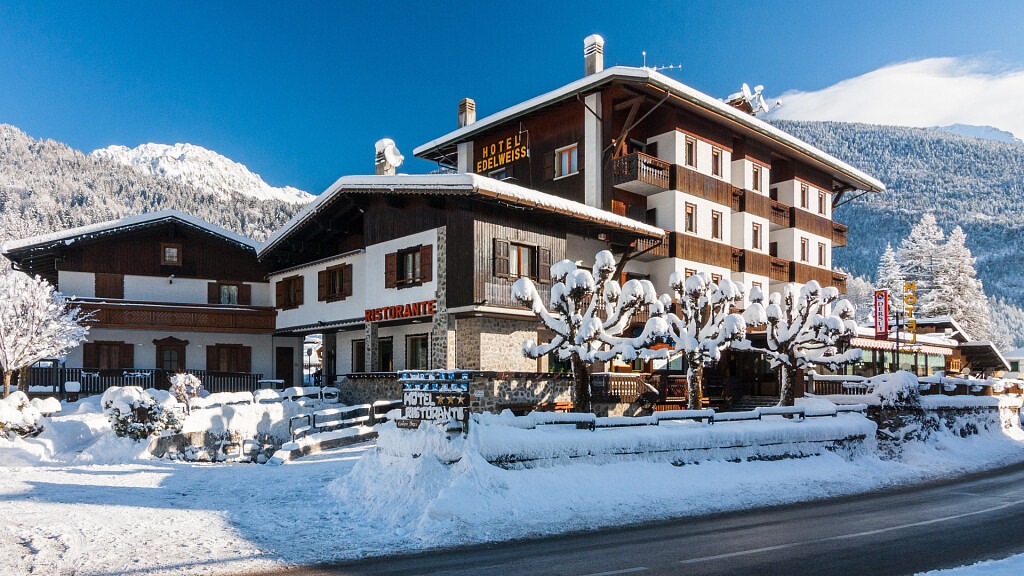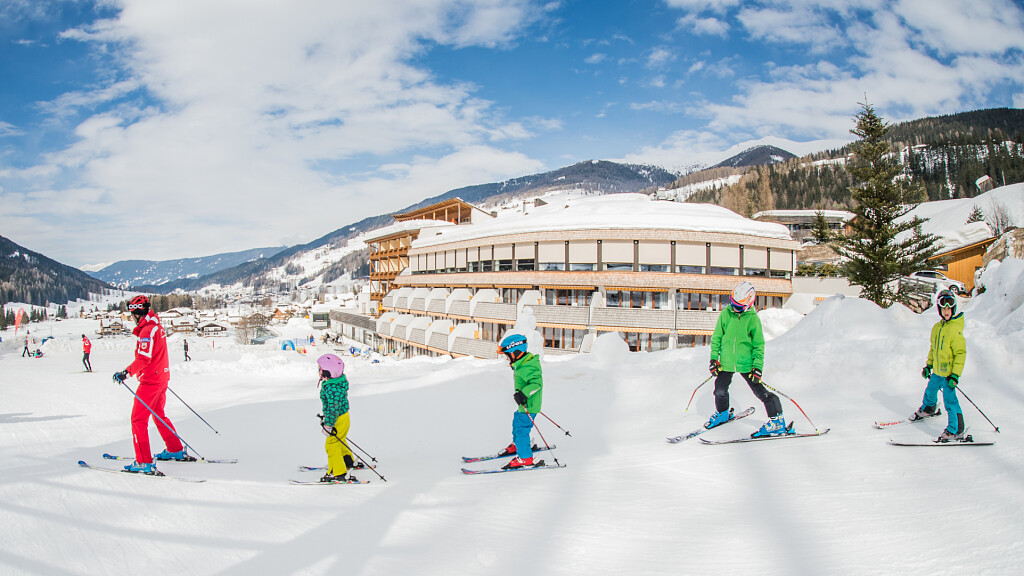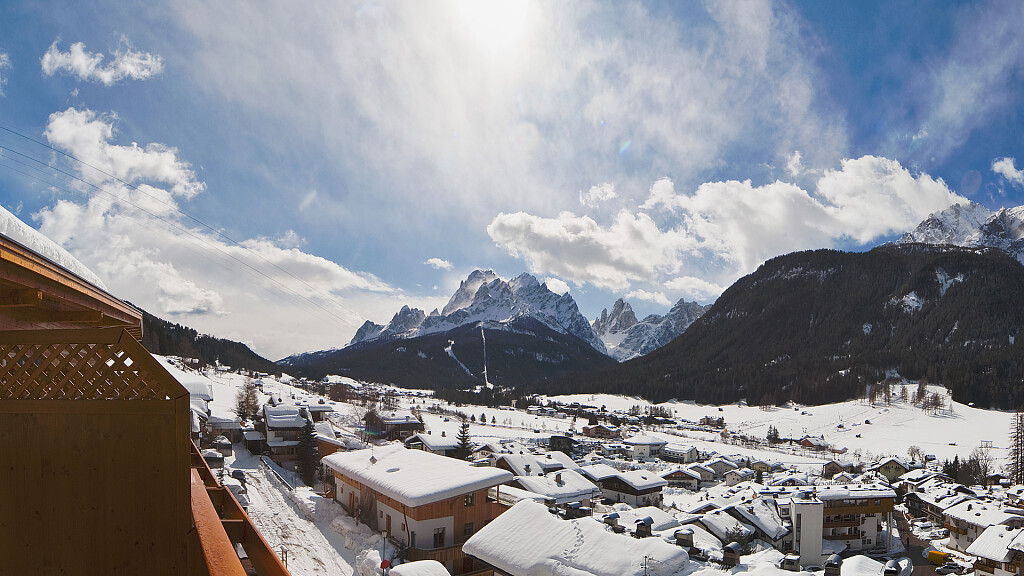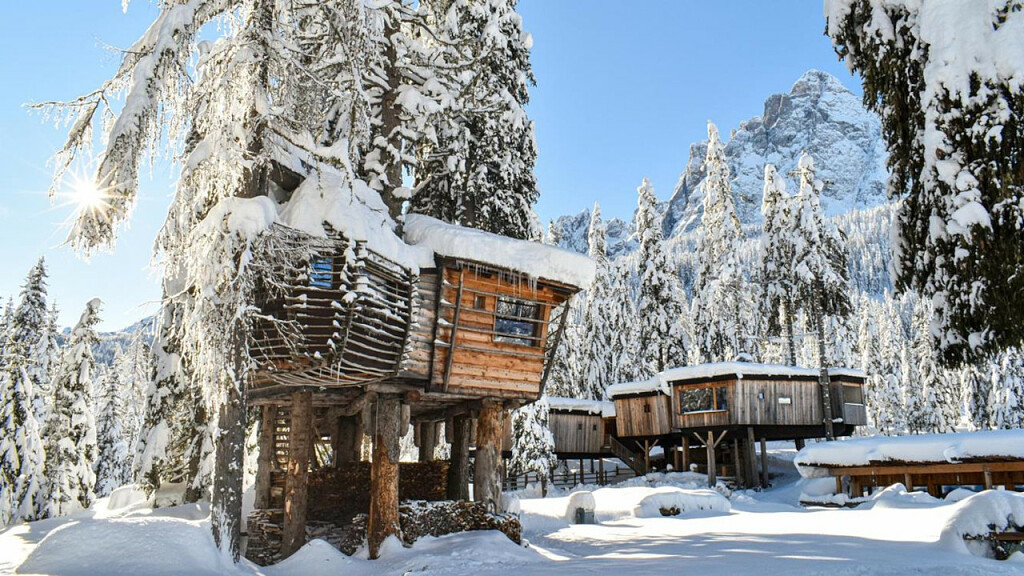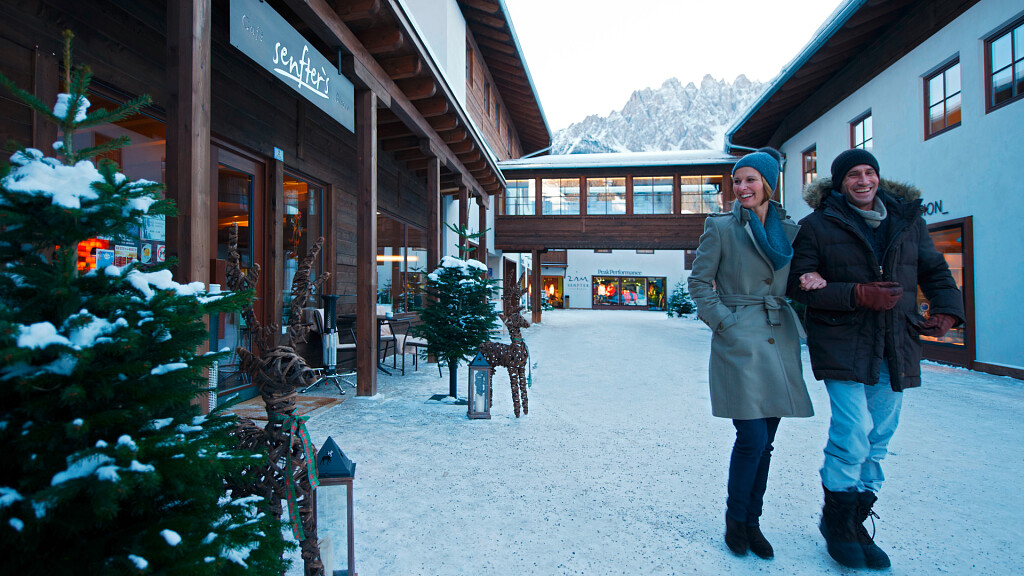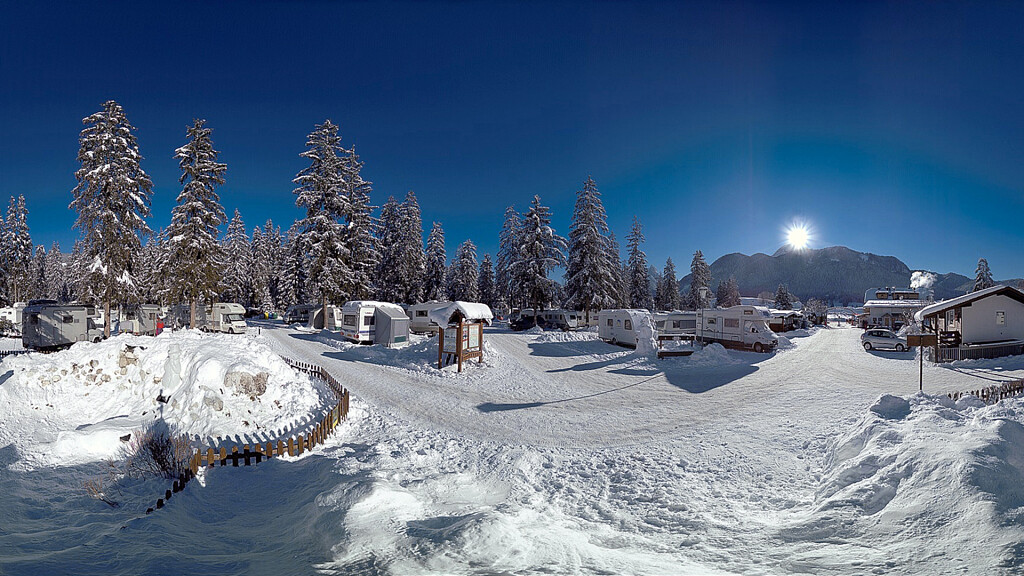The Three Peaks of Lavaredo, rising on the border between the northernmost section of the Province of Belluno and the holiday region Three Peaks/3 Zinnen in the Dolomites, in South Tyrol, are among the best known mountains in the Alps, the more photographed and represented on postcards and calendars.
Easily accessible and of great historical value, these works of art created by nature have with their distinctive shape and dramatic beauty always attracted tourists, especially those who love nature and appreciate breathtaking landscapes. During the decades this has been a must destination for climbers, and in the last years many free climbers came here to put their abilities to the test. On the Three Peaks of Lavaredo there are in fact over 100 recorded routes.
You can easily reach the Three Peaks from the province of Belluno (Auronzo and Misurina lake), and from South Tyrol (Sesto Valley and Dobbiaco). The massif was once in the municipality of Auronzo, but since 1752 it was divided in two parts, and now the northern section is in the territory of Dobbiaco, whereas the southern section still belongs to Auronzo.
The distinctive shape and color of the Three Peaks make this massif, which became a symbol for the Dolomites, easily recognizable: the "three dolostone fingers" stretching towards the sky are in fact a unique view. The massif comprises three peaks: Cima Grande (2,999 m), Cima Ovest (2,973 m) and Cima Piccola (2,857 m). The Three Peaks have often been at the center of tragic events. The massif became a strategic battlefield during the First World War, whereas in 1974 a Bell 206 crashed here. You can still see the trenches from the war period and a tombstone made with the helicopter blades.
Three Peaks of Lavaredo: a myth for tourists and climbers
You can reach the Three Peaks through the toll road going from Misurina to the Auronzo Hut, equipped with parking for cars, buses and campers.
If you prefer to go on foot, you can take different routes: from Rienza Valley and the Landro Lake; from Fiscalina Valley; from the Tre Scarpieri Hut in Sesto; from the Pian di Cengia Hut, passing by the Comici Hut; and from Auronzo, first along Val Marzon and then along the Vallon di Lavaredo.
Near the Three Peaks there are three huts: Antonio Locatelli, Lavaredo and Auronzo.
You can then take a 4 hour trekking trail running around the massif, the Tour of the Three Peaks of Lavaredo, or, if you are an expert trekker, you can explore the trail going from the Auronzo Hut to the Locatelli Hut.
Moreover, the massif is a stage of the Alpine Path of the Dolomites n. 4.
Besides tourists and trekkers, the Three Peaks have always been a favorite destination for fearless climbers. The first ascents date back to 1860, and the first to climb Cima Grande was Paul Grohmann, with guide Michel Inerrkofer, who climbed also the two lower peaks. The first climbing routes were classified first and second grade, affordable to most climbers. The boom started before First World War with Angelo Dibona, Paul Preuss and Hans Dulfer who opened fourth grade routes. After the war, the most famous climb is that of the north face of Cima Grande, by Emilio Comici and Giuseppe and Angelo Dimai. Afterwards, Comici opened another historic route, the sixth grade Yellow Edge, on the south face of Cima Piccola, and then it was the turn of the direct routes to Cima Grande and Cima Ovest. In the last years extreme free climbers and mountaineers climbed IX grade routes. In 2011, Olzer and Kleindl highlined the Three Peaks.
Here takes place also an important mountain running competition, the Südtirol Corsa Tre Cime Alpin, with start at Sesto and arrival at Three Peaks.

